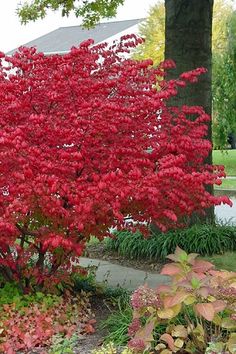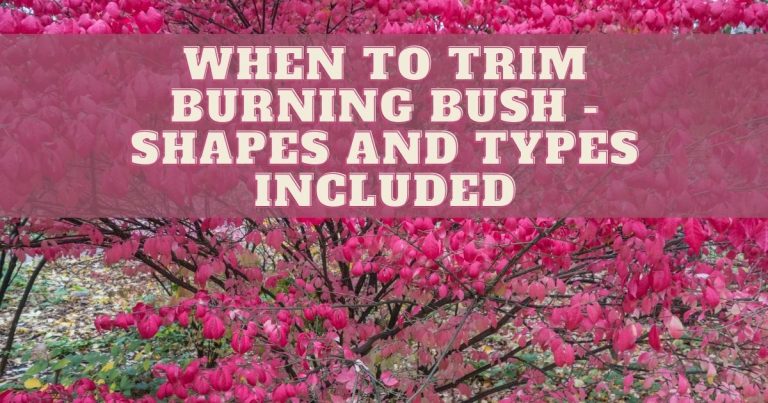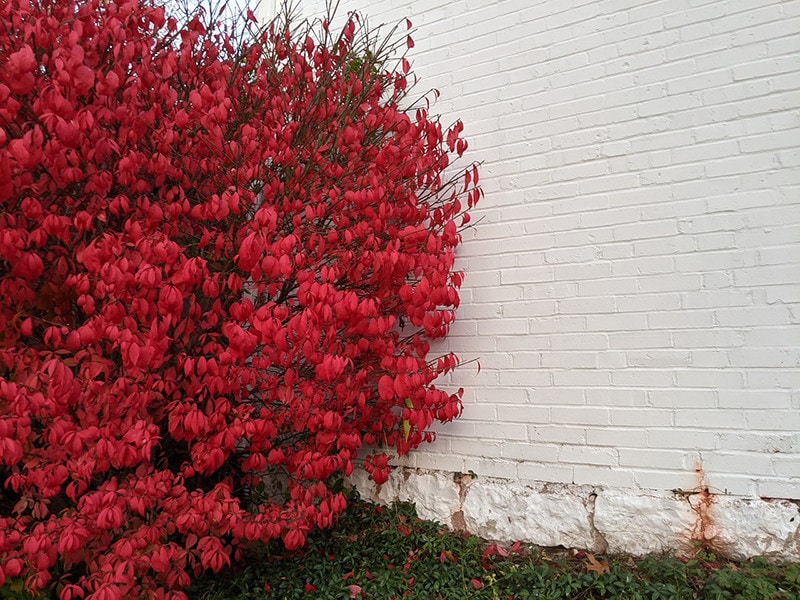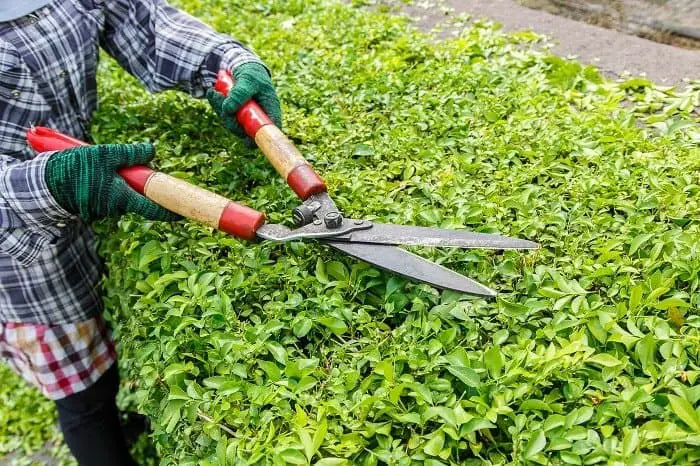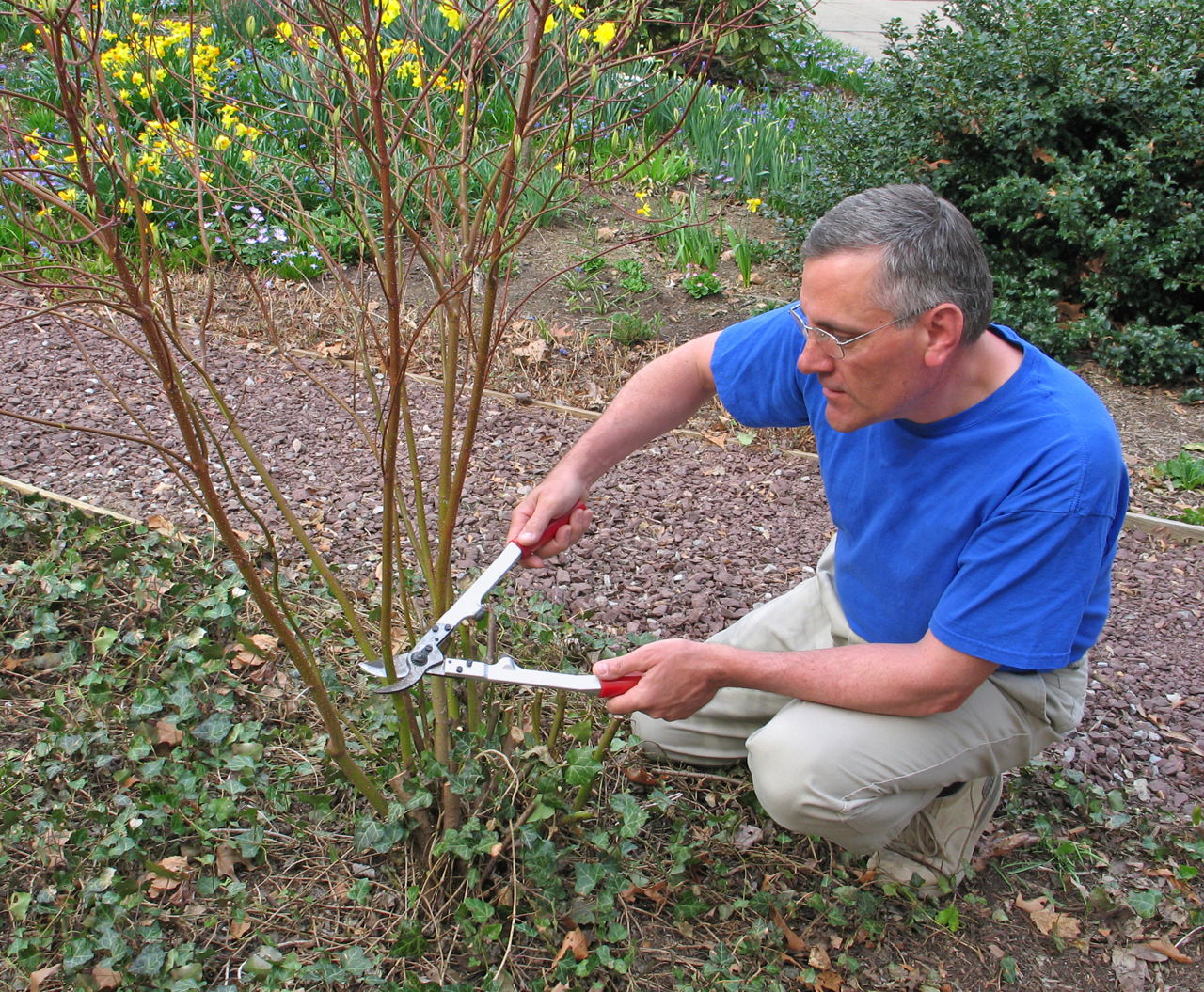Why Prune Your Burning Bush: Understanding the Benefits
Pruning a burning bush is an essential part of its maintenance, and it offers numerous benefits for the plant’s overall health, shape, and appearance. By pruning your burning bush regularly, you can control its size, promote new growth, and encourage vibrant fall colors. Pruning also helps to remove dead or damaged branches, which can improve air circulation and reduce the risk of disease.
One of the primary reasons to prune a burning bush is to maintain its shape and size. Burning bushes can grow quite large if left unpruned, and regular pruning can help keep them under control. By pruning your burning bush, you can encourage a more compact, bushy shape that is perfect for hedges, borders, or specimen plants.
In addition to controlling size, pruning also promotes new growth in burning bushes. When you prune your burning bush, you are encouraging the plant to produce new stems and leaves, which can lead to a fuller, more vibrant plant. This is especially important for burning bushes, which are known for their brilliant fall colors. By pruning your burning bush regularly, you can encourage more intense fall colors and a healthier, more robust plant.
Another benefit of pruning a burning bush is that it can help prevent disease. By removing dead or damaged branches, you can reduce the risk of disease spreading to other parts of the plant. This is especially important for burning bushes, which are susceptible to diseases such as root rot and leaf spot.
Overall, pruning a burning bush is an essential part of its maintenance, and it offers numerous benefits for the plant’s overall health, shape, and appearance. By pruning your burning bush regularly, you can control its size, promote new growth, and encourage vibrant fall colors. Whether you are a seasoned gardener or just starting out, learning how to prune a burning bush is a valuable skill that can help you keep your plants healthy and thriving.
Choosing the Right Tools for the Job: Pruning Essentials
When it comes to pruning a burning bush, having the right tools for the job is essential. The right tools can make the pruning process easier, safer, and more effective. In this section, we will discuss the necessary tools for pruning a burning bush, including hand pruners, loppers, and pruning saws.
Hand pruners are a must-have for any gardener, and they are especially useful for pruning burning bushes. They are ideal for cutting smaller branches and stems, and they can be used to make precise cuts. When selecting hand pruners, look for a pair that is comfortable to hold and has sharp blades. Dull blades can crush the stems of the plant, rather than making a clean cut.
Loppers are another essential tool for pruning a burning bush. They are used to cut thicker branches and stems, and they can be used to reach high branches. When selecting loppers, look for a pair that is sturdy and has long handles. This will give you the leverage you need to cut through thicker branches.
Pruning saws are also useful for pruning a burning bush, especially when it comes to cutting larger branches. They are designed to make precise cuts, and they can be used to cut through branches that are too thick for loppers. When selecting a pruning saw, look for one that is sharp and has a comfortable handle.
In addition to having the right tools, it’s also important to know how to properly maintain them. This includes cleaning and sharpening the blades, as well as storing them in a dry place. By properly maintaining your pruning tools, you can ensure that they will last for a long time and continue to perform well.
When it comes to pruning a burning bush, it’s also important to consider the safety of the tools. Make sure to wear gloves and safety glasses when pruning, and avoid using tools that are damaged or dull. By taking the necessary safety precautions, you can ensure a safe and successful pruning experience.
By having the right tools and knowing how to properly maintain them, you can ensure that your burning bush is pruned effectively and safely. Whether you are a seasoned gardener or just starting out, learning how to prune a burning bush is a valuable skill that can help you keep your plants healthy and thriving.
When to Prune: Timing is Everything
Pruning a burning bush at the right time is crucial for its health and appearance. The timing of pruning can affect the plant’s ability to grow, produce flowers, and respond to pruning. In this section, we will discuss the best time to prune a burning bush, including the optimal season, month, and even time of day.
The best time to prune a burning bush is during the late winter or early spring, before new growth begins. This allows the plant to heal quickly and reduces the risk of disease and pests. Pruning during this time also helps to control the plant’s size and shape, as it is easier to see the overall structure of the plant.
Pruning in the fall, after the plant has finished blooming, is also acceptable. However, pruning too late in the fall can cause the plant to produce new growth, which can be damaged by frost. Pruning in the summer is not recommended, as it can cause stress to the plant and lead to disease and pests.
In addition to the time of year, the time of day is also important when pruning a burning bush. Pruning in the morning, when the plant is at its highest water content, is best. This helps to reduce stress on the plant and promotes healthy healing.
It’s also important to consider the weather when pruning a burning bush. Pruning during extreme weather conditions, such as high winds, heavy rain, or intense heat, can cause stress to the plant and lead to disease and pests. Pruning during calm, dry weather is best.
By pruning a burning bush at the right time, you can help to promote healthy growth, control the plant’s size and shape, and encourage vibrant fall colors. Whether you are a seasoned gardener or just starting out, learning how to prune a burning bush is a valuable skill that can help you keep your plants healthy and thriving.
When pruning a burning bush, it’s also important to consider the plant’s growth cycle. Burning bushes typically grow new stems and leaves in the spring, and produce flowers in the summer. Pruning during these times can affect the plant’s ability to produce flowers and grow new stems.
By understanding the best time to prune a burning bush, you can make informed decisions about how to care for your plant. Whether you are pruning to control size, promote healthy growth, or encourage vibrant fall colors, timing is everything.
Pruning Techniques: A Step-by-Step Guide
Pruning a burning bush requires a combination of technique and patience. In this section, we will provide a step-by-step guide on how to prune a burning bush, including how to remove dead or damaged branches, shape the plant, and cut back overgrown stems.
Step 1: Remove Dead or Damaged Branches
Begin by removing any dead or damaged branches from the plant. This will help to prevent the spread of disease and encourage healthy growth. Use a pair of hand pruners or loppers to cut the branches at the base, making sure to make a clean cut just above a growth node.
Step 2: Shape the Plant
Once you have removed any dead or damaged branches, use a pair of pruning shears or loppers to shape the plant. Cut back any overgrown stems or branches, and use a pruning saw to cut through thicker branches. Make sure to cut at a 45-degree angle, and avoid cutting too much of the plant at once.
Step 3: Cut Back Overgrown Stems
Use a pair of loppers or a pruning saw to cut back any overgrown stems or branches. Cut the stems at the base, making sure to make a clean cut just above a growth node. This will help to control the plant’s size and promote healthy growth.
Step 4: Thin Out the Plant
Use a pair of hand pruners or pruning shears to thin out the plant. Cut back any stems or branches that are growing inwards, and remove any weak or spindly growth. This will help to promote air circulation and encourage healthy growth.
Step 5: Check for Pests and Diseases
Finally, check the plant for any signs of pests or diseases. Look for any signs of infestation, such as aphids or spider mites, and remove any infected or infested branches. Also, check for any signs of disease, such as black spots or powdery mildew, and treat the plant accordingly.
By following these steps, you can prune your burning bush effectively and promote healthy growth. Remember to always use clean and sharp pruning tools, and to make clean cuts just above a growth node. This will help to minimize stress on the plant and promote healthy growth.
Pruning a burning bush is a process that requires patience and technique. By following these steps, you can prune your burning bush effectively and promote healthy growth. Whether you are a seasoned gardener or just starting out, learning how to prune a burning bush is a valuable skill that can help you keep your plants healthy and thriving.
Common Pruning Mistakes to Avoid
When pruning a burning bush, it’s essential to avoid common mistakes that can damage the plant or lead to poor growth. In this section, we will discuss common pruning mistakes to avoid, including over-pruning, pruning at the wrong time, and not making clean cuts.
Over-pruning is one of the most common mistakes people make when pruning a burning bush. Over-pruning can cause stress to the plant, leading to disease and pest problems. It can also lead to a reduction in the plant’s ability to produce flowers and foliage. To avoid over-pruning, prune only what is necessary to maintain the plant’s shape and size.
Pruning at the wrong time is another common mistake. Pruning a burning bush at the wrong time can cause stress to the plant, leading to disease and pest problems. It can also lead to a reduction in the plant’s ability to produce flowers and foliage. To avoid pruning at the wrong time, prune your burning bush during the late winter or early spring, when the plant is dormant.
Not making clean cuts is another common mistake. When pruning a burning bush, it’s essential to make clean cuts just above a growth node. This will help the plant to heal quickly and reduce the risk of disease and pests. To make clean cuts, use a pair of sharp hand pruners or loppers, and cut at a 45-degree angle.
Other common pruning mistakes to avoid include pruning too much of the plant at once, not removing dead or damaged branches, and not thinning out the plant. By avoiding these mistakes, you can ensure a successful pruning experience and promote healthy growth in your burning bush.
To avoid over-pruning, prune only what is necessary to maintain the plant’s shape and size. Remove any dead or damaged branches, and thin out the plant to promote air circulation and healthy growth. By following these tips, you can prune your burning bush effectively and promote healthy growth.
Pruning a burning bush requires patience and technique. By avoiding common pruning mistakes, you can ensure a successful pruning experience and promote healthy growth in your plant. Whether you are a seasoned gardener or just starting out, learning how to prune a burning bush is a valuable skill that can help you keep your plants healthy and thriving.
Pruning for Shape and Size: Tips and Tricks
Pruning a burning bush is not just about removing dead or damaged branches, but also about shaping the plant to achieve a desired shape or size. In this section, we will provide tips and tricks on how to prune a burning bush to control its height, width, and density.
To control the height of a burning bush, prune the plant in the late winter or early spring, when it is dormant. Cut back the tallest stems to about one-third of their height, and remove any weak or spindly growth. This will help to promote new growth and encourage the plant to grow more compactly.
To control the width of a burning bush, prune the plant in the late spring or early summer, when it is in active growth. Cut back the stems that are growing outside of the desired shape, and remove any weak or spindly growth. This will help to promote new growth and encourage the plant to grow more compactly.
To control the density of a burning bush, prune the plant in the late summer or early fall, when it is in active growth. Cut back the stems that are growing too densely, and remove any weak or spindly growth. This will help to promote air circulation and encourage the plant to grow more healthily.
There are several different pruning techniques that can be used to shape a burning bush, including pinching, thinning, and shearing. Pinching involves removing the tips of the stems to encourage branching, while thinning involves removing select stems to promote air circulation and encourage healthy growth. Shearing involves cutting back the stems to a uniform height, and is often used to maintain a formal shape.
When pruning a burning bush, it’s essential to make clean cuts just above a growth node. This will help the plant to heal quickly and reduce the risk of disease and pests. It’s also essential to prune the plant at the right time, as pruning at the wrong time can cause stress to the plant and lead to disease and pest problems.
By following these tips and tricks, you can prune your burning bush to achieve a desired shape or size. Whether you want to control the plant’s height, width, or density, pruning is an essential part of maintaining the health and appearance of your burning bush.
Pruning a burning bush requires patience and technique. By following these tips and tricks, you can prune your burning bush effectively and promote healthy growth. Whether you are a seasoned gardener or just starting out, learning how to prune a burning bush is a valuable skill that can help you keep your plants healthy and thriving.
Pruning for Health: Managing Pests and Diseases
Pruning a burning bush is not just about shaping the plant or promoting healthy growth, but also about maintaining its health. In this section, we will discuss the importance of pruning in managing pests and diseases, and provide tips on how to prune a burning bush to prevent the spread of disease.
One of the most common pests that can affect a burning bush is the spider mite. These tiny insects can cause yellowing or bronzing of the leaves, and can be difficult to control. To prevent the spread of spider mites, prune the plant regularly to remove any infested branches. Use a pair of hand pruners or loppers to cut the branches at the base, and dispose of them in a sealed bag to prevent the mites from spreading.
Another common pest that can affect a burning bush is the aphid. These small, soft-bodied insects can cause curled or distorted leaves, and can be difficult to control. To prevent the spread of aphids, prune the plant regularly to remove any infested branches. Use a pair of hand pruners or loppers to cut the branches at the base, and dispose of them in a sealed bag to prevent the aphids from spreading.
In addition to pests, burning bushes can also be susceptible to diseases such as powdery mildew and leaf spot. These diseases can cause white, powdery patches or black spots on the leaves, and can be difficult to control. To prevent the spread of disease, prune the plant regularly to remove any infected branches. Use a pair of hand pruners or loppers to cut the branches at the base, and dispose of them in a sealed bag to prevent the disease from spreading.
When pruning a burning bush to manage pests and diseases, it’s essential to make clean cuts just above a growth node. This will help the plant to heal quickly and reduce the risk of disease and pests. It’s also essential to prune the plant at the right time, as pruning at the wrong time can cause stress to the plant and lead to disease and pest problems.
By pruning a burning bush regularly, you can help to prevent the spread of pests and diseases, and promote healthy growth. Whether you are a seasoned gardener or just starting out, learning how to prune a burning bush is a valuable skill that can help you keep your plants healthy and thriving.
Pruning a burning bush for health is an essential part of maintaining the plant’s overall health and appearance. By following these tips and techniques, you can help to prevent the spread of pests and diseases, and promote healthy growth in your burning bush.
After Pruning: Caring for Your Burning Bush
After pruning your burning bush, it’s essential to provide the right care to ensure the plant recovers quickly and continues to thrive. In this section, we will provide guidance on how to care for your burning bush after pruning, including how to water, fertilize, and mulch the plant.
Watering is an essential part of caring for a burning bush after pruning. Make sure to water the plant regularly, but avoid overwatering, which can lead to root rot and other problems. Check the soil moisture by inserting your finger into the soil up to the first knuckle. If the soil feels dry, it’s time to water.
Fertilizing is also important for a burning bush after pruning. Use a balanced fertilizer that contains equal amounts of nitrogen, phosphorus, and potassium. Apply the fertilizer according to the manufacturer’s instructions, and avoid overfertilizing, which can damage the plant.
Mulching is another important part of caring for a burning bush after pruning. Mulch helps to retain moisture in the soil, suppress weeds, and regulate soil temperature. Use a layer of organic mulch such as wood chips or bark, and keep it a few inches away from the plant’s base.
In addition to watering, fertilizing, and mulching, it’s also important to monitor the plant’s response to pruning. Check the plant regularly for signs of stress, such as yellowing or droopy leaves. If you notice any problems, adjust your care routine accordingly.
By following these tips, you can help your burning bush recover quickly from pruning and continue to thrive. Remember to be patient, as it may take some time for the plant to fully recover. With proper care and attention, your burning bush will be back to its healthy and vibrant self in no time.
Caring for a burning bush after pruning is an essential part of maintaining the plant’s overall health and appearance. By following these tips, you can help your burning bush recover quickly and continue to thrive. Whether you are a seasoned gardener or just starting out, learning how to care for a burning bush after pruning is a valuable skill that can help you keep your plants healthy and thriving.


